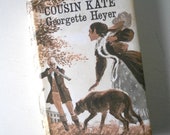
This project failed to come to full fruition, as she faced pressure from eager readers to continue publishing her popular romance novels the tax liabilities she dealt with were also a factor. Heyer aspired for many years to produce "the magnum opus of my latter years," a medieval trilogy featuring the House of Lancaster. Her other novels never reached this level of positive critical opinion and have been largely overlooked by scholars. The careful detail found in her 1937 historical romance, An Infamous Army, attracted critical acclaim. Despite the popularity of her romance novels, Heyer did not consider herself a romance writer and had ambivalent feelings towards the genre, once dismissing her stories as "another bleeding romance." Heyer published historical novels such as The Conqueror (1931), which depicted the early years of William I.

Heyer was noted for the thorough historical detail she invested in her works – unlike her literary predecessors, who typically lived in the eras they wrote about, Heyer had to enliven the past for her contemporary readers she thus endeavored to research every available aspect of her chosen plot settings. After 1940 her output consisted mainly of Regency novels, a collection of works that totaled 26 by the time of her death in 1974. Gradually, Heyer developed a "distinct, light-hearted" style, and her 1940 Regency novel The Corinthian established elements common in her future works: clever plotting, light comedic elements, and a writing style reminiscent of the Regency era. The first, Regency Buck, became a best-seller when it was published in 1935, and featured a wealthy heiress from the English countryside, whose sense of independence causes her to clash with London's social norms, but eventually conform to them – qualities seen in many other Heyer heroines. Heyer's fame stemmed mainly from her Regency novels, which made her a household name. The Black Moth was popular with readers and Heyer continued to publish more Georgian novels until the release of Faro's Daughter in 1941. The Georgian novel, which featured an earl who turns to outlawry in the 18th century, set the template for many of her future stories – romance, a historical setting, characters from the nobility, and a "saturnine" male lead.


īorn in Wimbledon, London, the nineteen-year-old Heyer published her first novel, The Black Moth, in 1921 from a story she had written for her hemophiliac younger brother Boris.

A best-selling author, Heyer's writing career saw her produce works from a variety of genres in total she published 32 novels in the romance genre, 6 historical novels, 4 contemporary novels, and 12 in the detective fiction genre. Georgette Heyer (1902–1974) was an English author particularly known for her historical romance novels set in the Regency and Georgian eras.


 0 kommentar(er)
0 kommentar(er)
